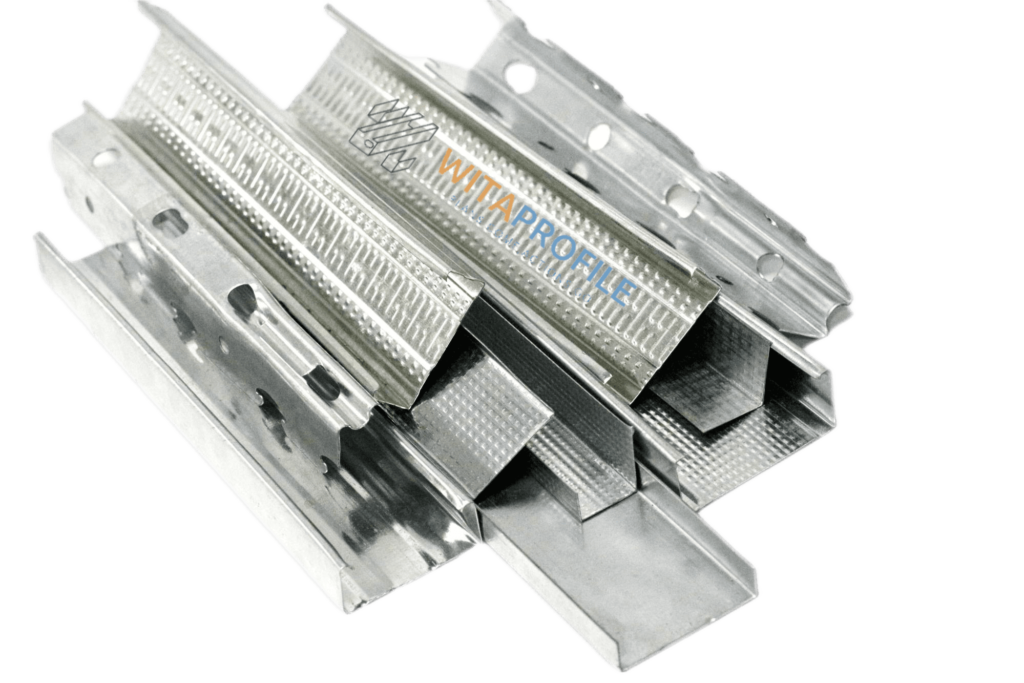
Light steel profiles are used in architecture to make buildings stronger and look better. Especially in ceilings, these profiles exhibit unmatched strength due to their composite structure. Their versatility, efficiency, and style keep them in demand.
In precise construction, light steel ceiling profiles are vital. It has four parts: main channel, ceiling carrier, channel clip, and hanging hook.
The Main Channel is the backbone and provides substantial strength against loads. The best models for this component are in the 38 to 60 series, which are strong.
The Ceiling Carrier is a reinforcement piece that attaches to the Main Channel to give you added support and stability. The Channel Clip, a critical link, ensures a robust connection.
The hanging hook connects the main channel to the ceiling, making the structure stronger.
These components make a complex yet powerful system that looks good and works well in any building.
The lightweight steel profile offers a lightweight, user-friendly design.
Light steel profiles are popular in construction because they are efficient, durable, and resistant to harsh environments. Made of hot-dip galvanized strips, they are cut, bent, and stamped.
The range includes C-, U-, and L-shapes, each with its special properties that help make the whole thing stronger and more stable. These coated steels are lightweight yet resilient, suitable for ceilings. Resistant to rust and corrosion, they guarantee longevity.
These profiles are dependable for construction projects because they are resilient to natural disasters. Light steel profiles are a good choice for contemporary construction because they are functional, durable, and aesthetically pleasing.
Let’s explore a simplified yet professional installation guide for light steel ceiling profiles. These profiles are designed to infuse architectural charm into your living space.
First, select the appropriate specifications and dimensions for the profile. Mark the desired spacing at the installation site. Ensure uniform distances between all profiles.
Second, drill holes in the ceiling top using an electric or impact drill. Securely insert the hanging hooks into these holes using nails. Use carrier and channel connectors as needed.
Third, install a gypsum board (or any other ceiling material) over the profile. Secure the board to the profile using self-tapping screws. This step ensures a robust ceiling structure.
Finally, a decorative finish was applied to the plasterboard. Scrape off the putty and paint the surface for a polished ceiling appearance.
Light steel ceiling profiles require careful planning and execution. Following the steps above will help you create a visually appealing and robust ceiling system.
Just a heads-up: Installing lightweight steel profiles takes some know-how. Improper construction could weaken their structure and compromise their resilience. Essentially, the skills required are critical for optimal performance.
The light steel profile exhibits superior fire resistance, effectively mitigating fire risks.
Safety-wise, light steel profiles excel. They stick to the rules when it comes to fire safety in high-rise buildings and give industrial plants a fresh, modern look. Their durability ensures the protection of personnel and assets. These profiles can make your architectural or industrial projects safer and more aesthetically pleasing.
Light steel profiles effectively mitigate fire risks due to their superior fire resistance. Surface flame retardants reduce flammability and prolong material combustion. The steel is uniform and consistent, making the profiles fire-resistant.
Lighter fillers such as rock wool are often used in these profiles to make them safer in case of fire. Light steel profiles are ideal for high-risk areas such as public buildings and industrial facilities. Their versatility and effectiveness make them a vital part of contemporary construction practices.
Moreover, the light steel profile is exceptional, despite its inherent fire resistance.
Steel Profiles provide significant sound insulation, usually between 25 and 30 decibels. This skill stems from their robust construction and ample dimensions. Complex shapes and sharp angles can make noise worse because they reflect sound and spread it around. Adding materials that soak up sound makes the profile better at stopping sound. These features ensure peak efficiency even in the most demanding sound insulation scenarios.
The use of lightweight steel profiles is widespread due to its numerous benefits. Their robust design and functionality engender consumer confidence, perpetuating their market popularity.

